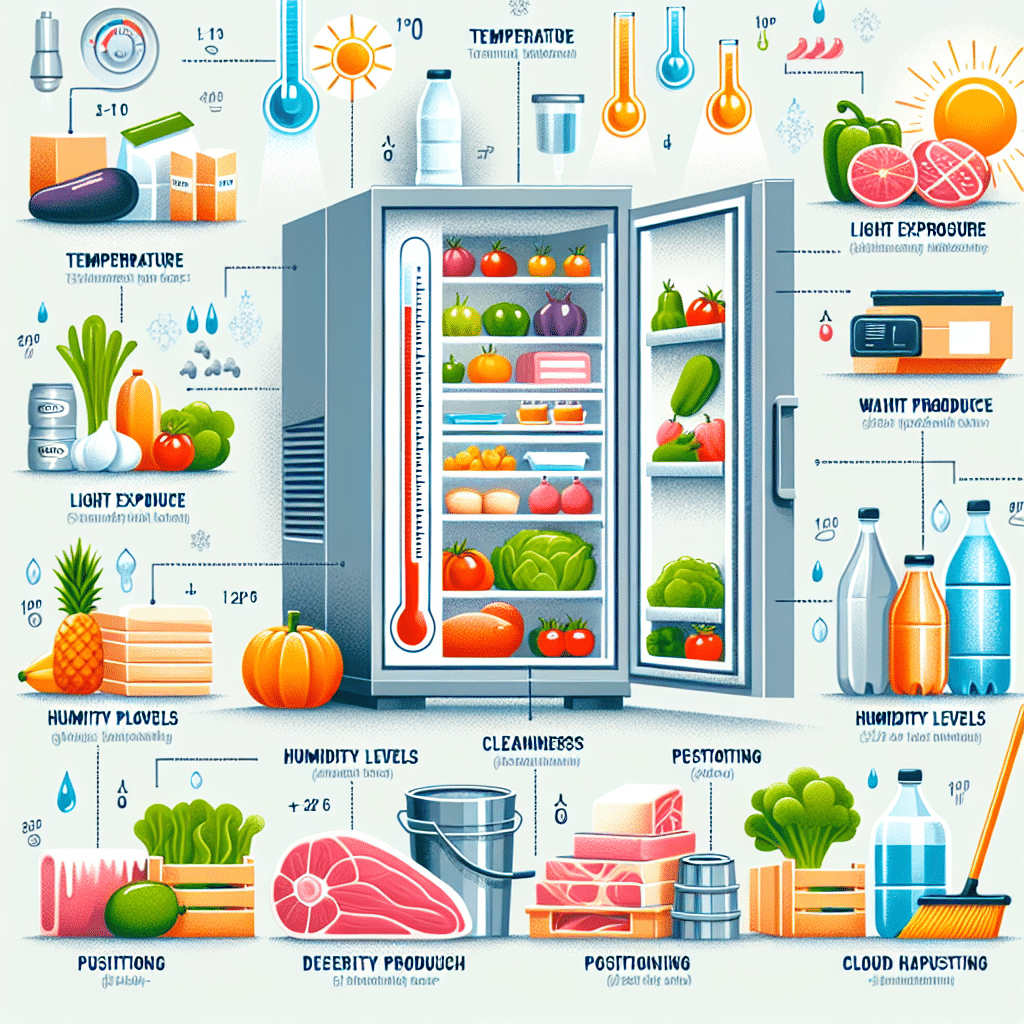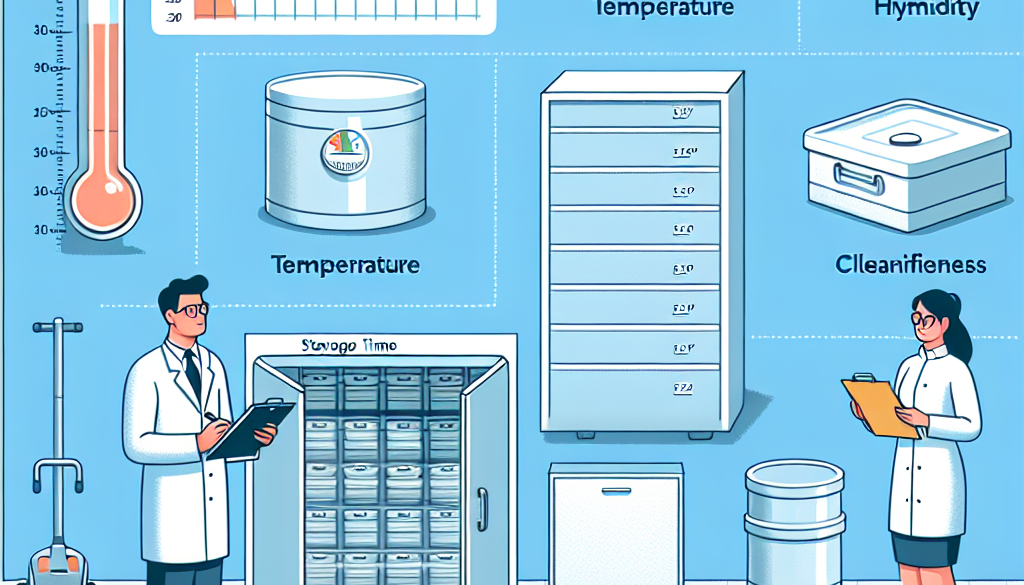Factors Impacting Food Storage
-
Table of Contents
- Essential Factors Impacting Food Storage and Preservation
- Temperature and Climate Conditions
- Atmospheric Composition
- Moisture Content and Water Activity
- Chemical Composition and pH Level
- Packaging Materials and Technology
- Handling and Transportation
- Conclusion
- Enhance Your Nutrition with ETprotein’s High-Quality Protein Products
Essential Factors Impacting Food Storage and Preservation

Food storage is a critical aspect of food safety and sustainability. It involves preserving food items to prevent spoilage, maintain nutritional value, and extend shelf life. The effectiveness of food storage is influenced by various factors, which can either enhance or compromise the quality of food. Understanding these factors is essential for consumers, food service professionals, and the food industry at large. This article explores the key elements that impact food storage and offers insights into how they can be managed to ensure food remains safe and nutritious over time.
Temperature and Climate Conditions
Temperature is one of the most significant factors affecting food storage. The rate at which food spoils is directly related to the temperature at which it is stored. The “danger zone” for food, which is between 40°F and 140°F (4°C and 60°C), is where bacteria can grow rapidly. To mitigate this risk, perishable foods should be stored at temperatures below 40°F (4°C) in the refrigerator or below 0°F (-18°C) in the freezer.
- Refrigeration slows down bacterial growth, extending the shelf life of many foods.
- Freezing can preserve food for extended periods by halting microbial growth and enzymatic reactions.
- Climate conditions, such as humidity and exposure to sunlight, can also affect food storage. High humidity can lead to mold growth, while direct sunlight can increase temperatures and cause degradation of nutrients.
Atmospheric Composition
The composition of the atmosphere surrounding food can significantly impact its longevity. Modified atmosphere packaging (MAP) is a technology that alters the proportion of gases (oxygen, carbon dioxide, and nitrogen) around the food to slow down spoilage and oxidation processes.
- Oxygen can cause oxidative spoilage and is a necessary element for the growth of aerobic bacteria and fungi.
- Carbon dioxide can inhibit the growth of bacteria and fungi, thus extending shelf life.
- Nitrogen is an inert gas often used to displace oxygen and prevent spoilage in packaged foods.
Moisture Content and Water Activity
Moisture content and water activity (aw) play crucial roles in food preservation. Water activity measures the availability of water for microbial growth and chemical reactions, not just the amount of water present in food.
- Lowering the water activity of food, through drying or adding solutes like salt and sugar, can inhibit microbial growth and prolong shelf life.
- Dehydrated foods, such as dried fruits, grains, and jerky, have low water activity and are less prone to spoilage.
- Proper packaging can help maintain optimal moisture levels and prevent the absorption or loss of water.
Chemical Composition and pH Level
The inherent chemical composition of food, including its pH level, can influence its susceptibility to spoilage. Foods with low pH levels (acidic foods) are generally more resistant to microbial growth.
- Acidic foods like vinegar, citrus fruits, and fermented products have natural preservative properties.
- Preservatives, both natural and synthetic, can be added to food to enhance shelf life by inhibiting microbial growth or oxidation.
- The presence of certain enzymes in food can lead to spoilage; blanching or other processing methods can inactivate these enzymes.
Packaging Materials and Technology
The choice of packaging materials and the use of advanced packaging technologies can significantly affect food storage outcomes.
- Barrier packaging materials, such as glass and certain plastics, can prevent the transfer of moisture, gases, and contaminants.
- Active packaging solutions, such as oxygen scavengers or ethylene absorbers, can extend shelf life by actively modifying the internal package environment.
- Smart packaging with indicators can inform consumers about the freshness or spoilage of food, ensuring timely consumption or disposal.
Handling and Transportation
Proper handling and transportation are essential to maintaining the integrity of food during storage. Mishandling can lead to physical damage, contamination, and temperature abuse.
- Ensuring a cold chain during transportation helps maintain temperature-sensitive foods at safe levels.
- Hygienic handling practices prevent cross-contamination with pathogens or chemicals.
- Shock-absorbing packaging can protect food from physical damage that could compromise its quality and safety.
Conclusion
In conclusion, effective food storage is influenced by a multitude of factors, including temperature, atmospheric composition, moisture content, chemical composition, packaging, and handling practices. By understanding and controlling these elements, we can significantly reduce food waste, ensure food safety, and maintain the nutritional value of our food supply. It is crucial for individuals and businesses to implement best practices in food storage to contribute to a more sustainable and health-conscious food system.
Enhance Your Nutrition with ETprotein’s High-Quality Protein Products
If you’re looking to improve your diet with high-quality protein sources, consider ETprotein’s range of organic bulk vegan proteins and L-(+)-Ergothioneine (EGT). Their products are non-GMO, allergen-free, and feature a neutral taste, making them an excellent addition to various dietary plans. Whether you’re a food manufacturer or a health-conscious consumer, ETprotein’s offerings can help you meet your protein needs while supporting overall wellness.
About ETprotein:
ETprotein, a reputable protein and L-(+)-Ergothioneine (EGT) Chinese factory manufacturer and supplier, is renowned for producing, stocking, exporting, and delivering the highest quality organic bulk vegan proteins and L-(+)-Ergothioneine. They include Organic rice protein, clear rice protein, pea protein, clear pea protein, watermelon seed protein, pumpkin seed protein, sunflower seed protein, mung bean protein, peanut protein, and L-(+)-Ergothioneine EGT Pharmaceutical grade, L-(+)-Ergothioneine EGT food grade, L-(+)-Ergothioneine EGT cosmetic grade, L-(+)-Ergothioneine EGT reference grade and L-(+)-Ergothioneine EGT standard. Their offerings, characterized by a neutral taste, non-GMO, allergen-free attributes, with L-(+)-Ergothioneine purity over 98%, 99%, cater to a diverse range of industries. They serve nutraceutical, pharmaceutical, cosmeceutical, veterinary, as well as food and beverage finished product distributors, traders, and manufacturers across Europe, USA, Canada, Australia, Thailand, Japan, Korea, Brazil, and Chile, among others.
ETprotein specialization includes exporting and delivering tailor-made protein powder and finished nutritional supplements. Their extensive product range covers sectors like Food and Beverage, Sports Nutrition, Weight Management, Dietary Supplements, Health and Wellness Products, and Infant Formula, ensuring comprehensive solutions to meet all your protein needs.
As a trusted company by leading global food and beverage brands and Fortune 500 companies, ETprotein reinforces China’s reputation in the global arena. For more information or to sample their products, please contact them and email sales(at)ETprotein.com today.














